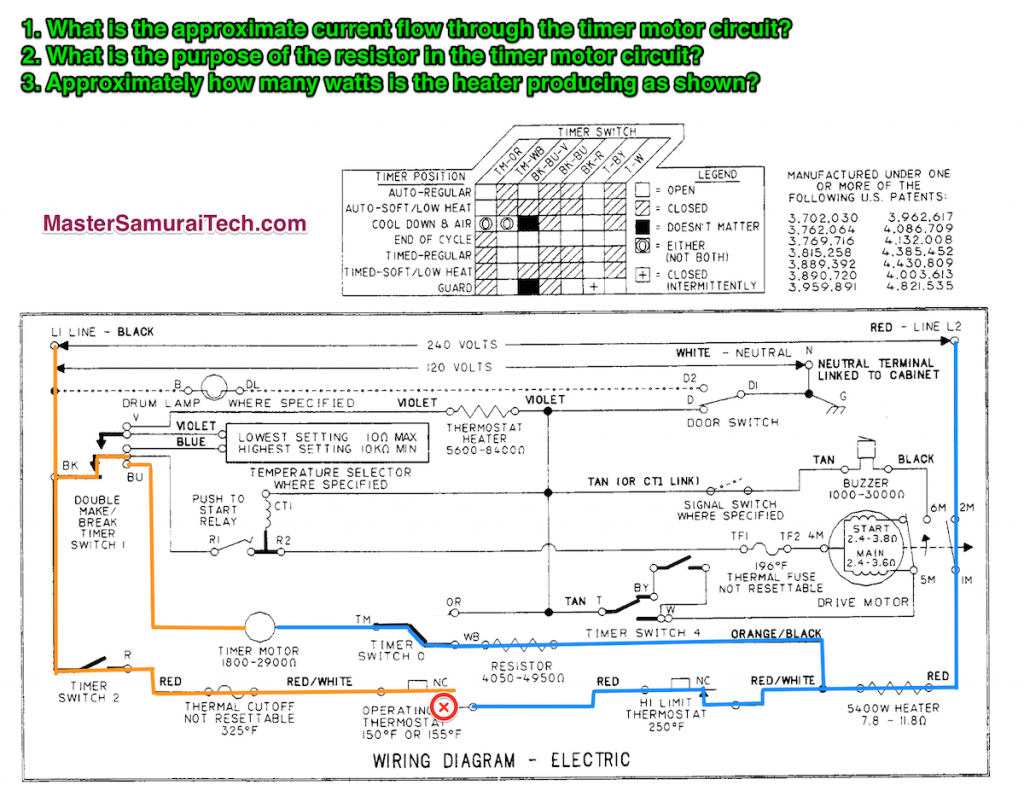1. To calculate the current flow in this simple series circuit, you first need to calculate the total circuit resistance.
The heater resistance is given as a range so, for simplicity, let's assume something in the middle, say 8 ohms.
The resistor ohms are also given as a range so let's again use something in the middle, say 4500 ohms.
Similarly, a mid-range resistance on the timer motor would be 2200 ohms.
Adding these up, the total circuit resistance is about 6708 ohms. Now we can calculate total circuit current using Ohm's Law:
I = E ÷ R = (total power supply voltage) ÷ (total circuit resistance) = 240 vac ÷ 6708 ohms = 0.036 amps.
2. The timer motor is a 120 vac synchro motor but the circuit is supplied with 240 vac. The purpose of the resistor is to drop some voltage so that the voltage across the timer motor is something less than 120 vac. How much less? You can calculate the voltage drop across the resistor because we know the circuit current, 0.036 amps. In a series circuit, current is the same at all points and through every load. Therefore, the voltage drop across the resistor is
E = I x R = (0.036 amps) x (4500 ohms) = 162 vac.
The remaining voltage is dropped across the heater and timer motor according to their resistances.
3. Ohm's Law again:
P = I2 x R = (circuit current)2 x (heater resistance)
= (0.036)2 x (8 ohms) = 0.01 watts
Still confused? I explain and demystify circuits, reading schematics, troubleshooting with schematics, motors, and all the other basic skills that every appliance tech should have in our Core Appliance Repair Training course.
